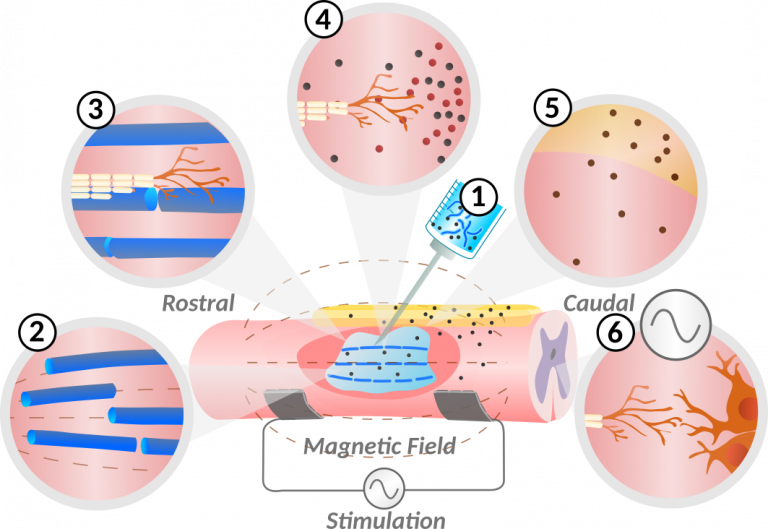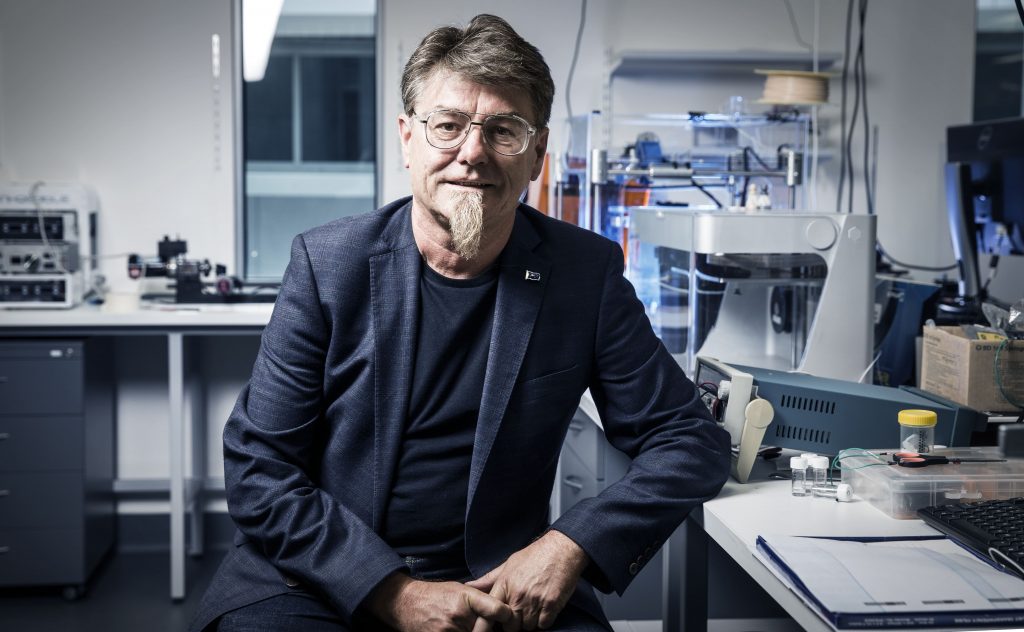Decades of research have failed to find a reliable way to repair the human spinal cord after injury. Now, Australian engineers are joining a global collaboration to solve this complex challenge.
Australian biomedical engineers are developing components of an injectable gel that could one day help regrow nerve fibres in the spine.
The soft gel material will be injected into the spinal cord of patients who have suffered traumatic injury in an attempt to repair the damage. It’s a new approach to spinal cord regeneration, and it’s bringing together scientists, engineers and clinicians from around the world in a collaboration known as Mend the Gap.
University of Wollongong biomedical engineer Professor Gordon Wallace first started researching spinal cord regeneration more than 20 years ago.
“It’s really quite complex,” he said. “As soon as the spinal cord is injured, it induces a whole range of biological responses, one of them being scarring. And once things start to scar, it becomes very difficult to heal them internally.”
Wallace, who is now Director of the Australian Research Council Centre of Excellence for Electromaterials Science, leads the Australian Mend the Gap team. He says traditional approaches to repairing the spine involve implanting a scaffold or a conduit into the defect.
But clinicians must implant the conduit at the right point in time and support the regrowth of neurons across the gap that forms when the spine is broken.
This gap, typically a few centimetres wide, essentially blocks nerve impulses from getting through. It can cause paralysis and loss of blood pressure, bladder and bowel control, as well as sexual dysfunction and chronic pain.
Forming a bridge
The idea is that a carefully formulated biomaterial can act as a bridge, facilitating healing and regenerating broken neural circuitry. The gel is to be inserted using a vision-equipped surgical robot for enhanced precision, and contains drugs designed to modify the tissue and revive nerve fibres.
“It does minimal additional damage in trying to address the repair,” Wallace said. “And then the structure within that scaffold is actually created after injection. So [we are] using a magnetic field to create an aligned structure within the material, which will help guide the growth of the neurons.”
The University of British Columbia’s Professor John Madden, a principal investigator in the Mend the Gap project, said a biomaterials bridge would be compatible with other systems and structures in the body.
“The soft gel that our team plans to use contains tiny magnetic rods that are aligned using an external magnet, creating guide rails that support the nerve fibres to grow in the right direction, eventually crossing the gap,” he said.
The gel’s formulation also includes bioactive molecules that can inhibit scar formation in the wound, act as neuroprotectors, and promote neuroregeneration. But these need to be introduced to the defect at a precise time.
That’s where University of Wollongong’s expertise comes in. Wallace said the team will engineer the material structure to deliver the molecules when needed.
“The bioactive molecule depots that we will create will have materials arranged in such a way that the right molecules become available at the right point in time during the regeneration process.”

A new hope
The technology will be based on polymers, with Wallace’s group adapting traditional approaches, like 3D printing or fibre spinning, to create the structures they want. The team will also contribute skills in sourcing biomaterials, scaling materials processing, formulations, sterilisation and packaging.
While the University of Wollongong is currently the only Australian partner, Mend the Gap includes 15 institutions in five countries, and has received 24 million Canadian dollars ($25.57 million) from Canada’s New Frontiers in Research Fund.
If successful, the research could offer hope to millions. A study commissioned by SpinalCure Australia estimates 20,800 people live with a spinal cord injury in Australia alone, a third of whom have no movement in the affected parts of their body.
The SpinalCure study put the total lifetime cost of spinal cord injuries in 2020 at $75.4 billion, or $3.7 billion per year. It estimated that if a treatment improved muscle function in just 10 per cent of people with a spinal cord injury, $3.5 billion could be saved.
Wallace said Mend the Gap is made possible by advances in material science, drug delivery and biological cell interactions. It’s a long way from 20 years ago, when the materials he was working with simply didn’t address the complexities of repairing the human spinal cord.
“We’ve brought together advances from groups all over the world to chip in and have a real red-hot crack at trying to solve this very complex challenge,” he said.
